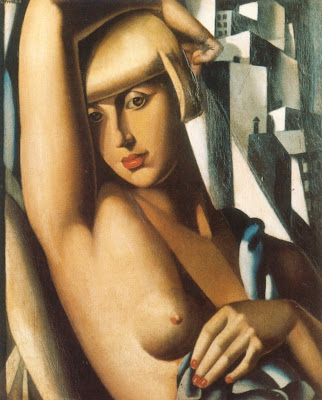 Yohji Yamamoto Black Ink Illustration
Yohji Yamamoto Black Ink Illustration
 Japanese pigment paint - used to make the prints for Yamamoto garments
Japanese pigment paint - used to make the prints for Yamamoto garments
Another exhibition I recently attended at the V&A was Yohji Yamamoto. A exhibition and fashion in motion catwalk. It was a very interesting exhibition in the way it had been curated. Many people visiting would at first glance think of it to be a minimlist exhibition. However there was a lot of effort put into the bringing the display together. The minimlist look, is appropiate to the aesthetics of Yamamoto. The bright lighting and no glass cases, allows visitors to appreciate fully the clothing in great detail. The exhibition has been compared to his flag ship store.
Also it was interesting that there were some pieces on display within the permanent collections. I think the menswear pieces displayed to look into the courtyard worked the best. As visitors looked at the back of the garment from the gallery. As well as looking through into the gallery from the courtyard, to see the front of the suits, a voyeuristic feeling from both angles.
The scalfolding gave the layout of the space structure, without this I feel with the outfits not being in case would appear cluttered. I like the fact that once the exhibition was installed, Yamamoto went around the walls and painted illustrations of shadows of the manequins. It was not planned out for him to do this, and I think the illustrations give a extra depth to the display.
I had many favourite pieces, including the Yellow strapless silk dress and oversized coolie hat covered with draped silk, Yohji Yamamoto, Spring/Summer 1997. This outfit harked back to Christian Dior's fifties new look, but with a contemporary twist. From the use of the vivid yellow, and the draping of the fabric. Yamamoto's garments are all made with high quality fabrics, a lot of the garments look quite heavy compared to high street pieces.
About the exhibition: presented the work of Yohji Yamamoto, one of the most influential and enigmatic fashion designers of the last forty years. Yamamoto became internationally renowned as an idosyncratic and ground-breaking fashion designer in the early eighties. He challenged traditional notions of fashion by designing garments that seemed oversized, unfinished, played with ideas of gender or fabrics not normally used in fashionable attire such as felt or neoprene.










































































